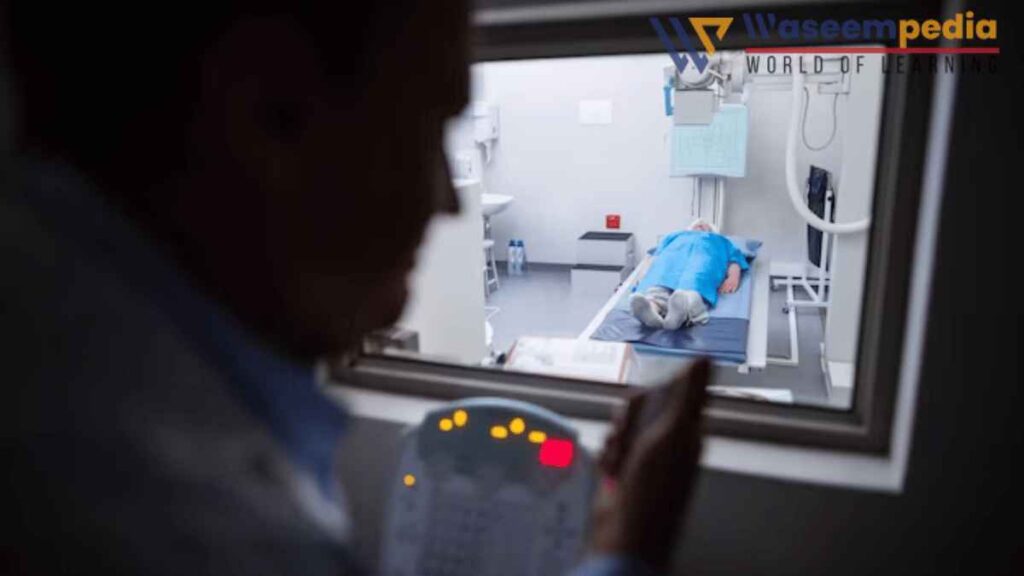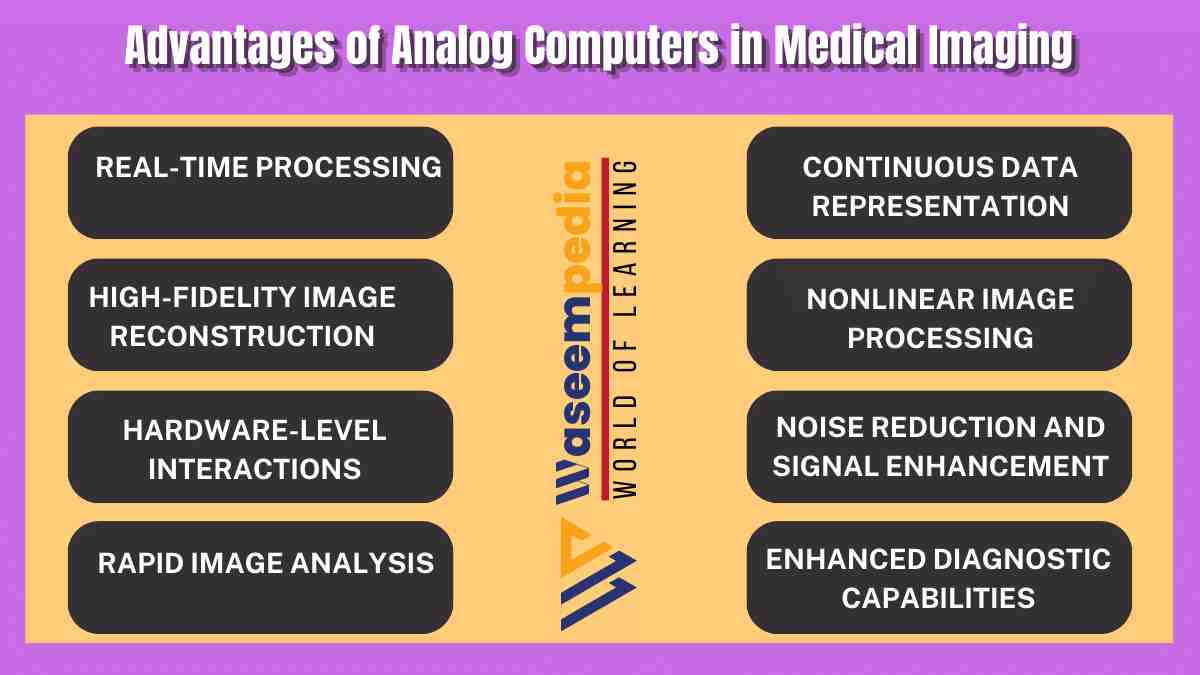Analog computers offer significant advantages in medical imaging, including real-time processing, continuous data representation, high-fidelity image reconstruction, nonlinear image processing, hardware-level interactions, noise reduction and signal enhancement, and rapid image analysis.
While digital imaging technologies have become prevalent, analog computers provide unique benefits that can enhance the imaging process and aid in accurate diagnosis. In this article, we will explore the advantages of analog computers in medical imaging and understand their significance in this domain.

Medical imaging plays a crucial role in modern healthcare, allowing physicians to visualize and analyze internal body structures and functions. While digital imaging technologies have revolutionized medical imaging, analog computers offer unique advantages in certain aspects of the imaging process. By leveraging the continuous nature of analog computation, analog computers provide valuable insights and contribute to more accurate and detailed medical images.
What is Analog Computers?
Analog computers process information using continuous physical quantities, such as voltages or currents, to represent and manipulate data. Unlike digital computers that operate on discrete values, analog computers can directly model and simulate the behavior of medical imaging data. In the context of medical imaging, analog computers offer an alternative approach to image reconstruction and processing.
7 Advantages of Analog Computers in Medical Imaging
7 Advantages of Analog Computers in Medical Imaging are as following
1. Real-Time Processing
Real-time processing is critical in medical imaging, as it allows for immediate analysis and interpretation of imaging data. Analog computers excel in real-time processing due to their ability to work with continuous data streams without the need for digitization or discretization.
This real-time capability enables medical professionals to visualize and assess images in real-time, facilitating timely diagnosis and treatment planning.
2. Continuous Data Representation
Analog computers utilize continuous data representation, which is advantageous in medical imaging. Medical images require high levels of detail and accuracy. Analog computers preserve the fidelity of imaging data without the quantization errors associated with digital systems.
By working with continuous data, analog computers can provide a more accurate representation of the underlying biological structures and functions, allowing for enhanced diagnostic capabilities.
3. High-Fidelity Image Reconstruction
Analog computers excel in high-fidelity image reconstruction in medical imaging. By directly modeling the continuous nature of imaging data, analog computers can accurately reconstruct detailed images from raw data.
This high-fidelity reconstruction enables medical professionals to visualize fine anatomical details and subtle abnormalities, aiding in accurate diagnosis and treatment planning.
4. Nonlinear Image Processing
Medical images often require nonlinear image processing techniques to enhance specific features or highlight abnormalities. Analog computers are well-suited for nonlinear image processing due to their ability to directly model and process complex relationships between image variables.
Analog computers enable researchers and clinicians to explore advanced image processing algorithms and achieve unique image enhancements that may be challenging to achieve with digital systems alone.
5. Hardware-Level Interactions
Analog computers enable hardware-level interactions in medical imaging. They can interface directly with imaging devices, such as sensors or detectors, allowing for real-time data acquisition and analysis.
This hardware-level interaction enhances the accuracy and timeliness of medical imaging, as it enables medical professionals to evaluate images in real-time with direct connections to physical components.
6. Noise Reduction and Signal Enhancement
Analog computers are effective in reducing noise and enhancing signals in medical images. The continuous nature of analog computation allows for precise filtering and signal processing techniques that can reduce noise artifacts and improve image quality.
Analog computers enable researchers and clinicians to develop and implement advanced noise reduction algorithms, enhancing the clarity and diagnostic value of medical images.
7. Rapid Image Analysis
Analog computers facilitate rapid image analysis in medical imaging. The parallel processing capabilities of analog computers allow for efficient and simultaneous computation on multiple image parameters.
This parallel processing enables quick image analysis, such as feature extraction or pattern recognition, which is beneficial for time-sensitive medical decisions and assessments.
Related FAQ’s
How do analog computers differ from digital computers in medical imaging?
Analog computers process continuous data and directly model imaging behavior, while digital computers operate on discrete values and rely on algorithms for image processing.
What advantages do analog computers offer in medical imaging?
Analog computers excel in real-time processing, continuous data representation, high-fidelity image reconstruction, nonlinear image processing, hardware-level interactions, noise reduction and signal enhancement, and rapid image analysis.
Why is real-time processing important in medical imaging?
Real-time processing allows for immediate analysis and interpretation of medical images, facilitating timely diagnosis and treatment planning.
How do analog computers handle noise reduction in medical images?
Analog computers can perform precise filtering and signal processing techniques that effectively reduce noise artifacts and improve image quality.
How do analog computers contribute to rapid image analysis in medical imaging?
Analog computers’ parallel processing capabilities enable efficient computation on multiple image parameters, allowing for quick image analysis and feature extraction.

